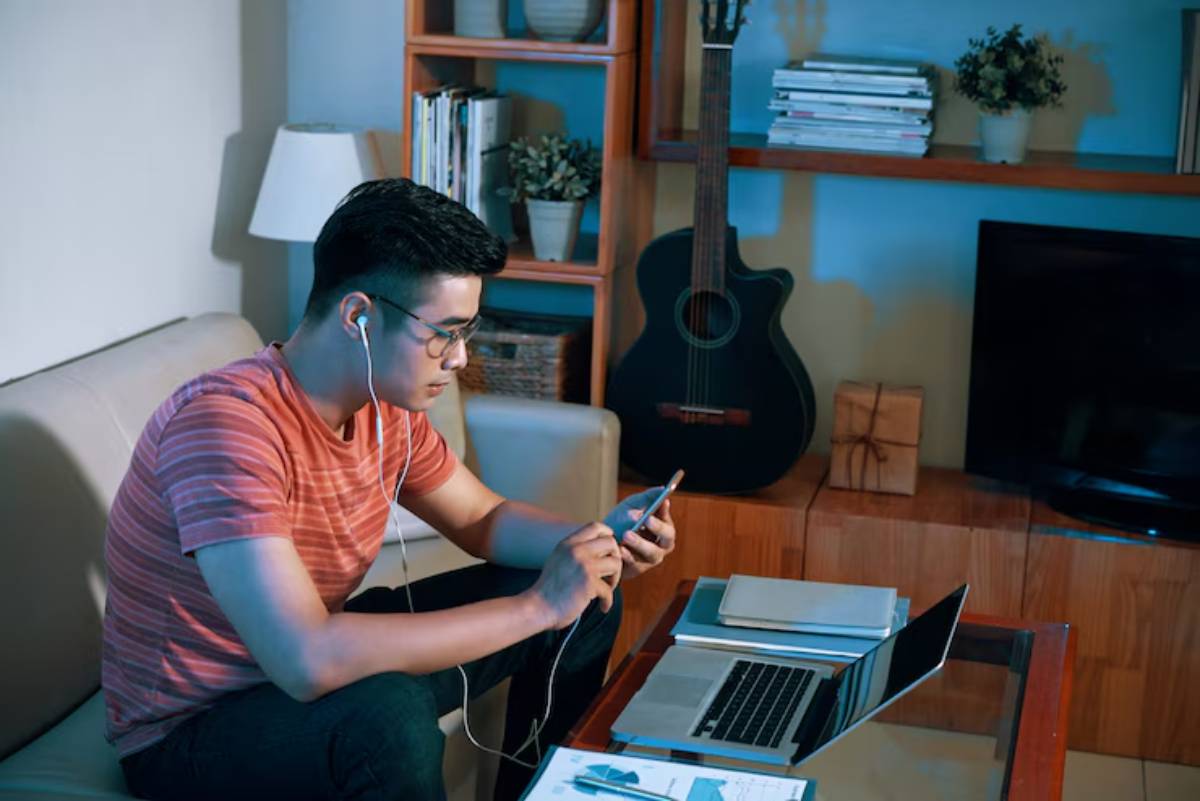The Health Blog

The Connection Between Physical and Mental Health in Remote Work
Have you ever sat through a day of back-to-back video calls, only to notice you’re tense, sluggish, and unusually irritable by the evening? You didn’t run a marathon, but your energy is zapped — and your mood has dipped.
This isn’t coincidence. It’s the physical and mental health link in action.
When you work remotely, physical movement becomes optional. Lunch breaks disappear, posture slips, and days blur together. While the setup is comfortable on the surface, the ripple effect on both your body and mind can be surprisingly intense.
In this article, we’ll explore how physical health and mental well-being are deeply connected in remote work environments. You’ll learn how your body influences your mood, what habits sabotage holistic wellness, and how to design a remote work life that supports your health from the inside out.
Why remote work disrupts the body-mind connection

When stillness becomes stress
The human body wasn’t designed to sit in one position for hours, nor was it made to process constant digital input without pause. Remote work, while flexible, tends to exaggerate both.
You start your day sitting. You work sitting. You rest sitting. There’s less movement, fewer transitions, and almost no environmental variation.
This impacts your mind in ways that are easy to miss:
- Reduced movement leads to stagnant blood flow, which can cause fatigue and sluggish thinking
- Poor posture and cramped environments contribute to pain, which quietly distracts and irritates
- Overexposure to screens strains your eyes and overstimulates your nervous system, making it harder to unwind
- A lack of sunlight and fresh air can lower mood-regulating hormones like serotonin
And while your body grows stiff, your thoughts become foggier, your patience shorter, and your resilience weaker.
The disconnect is subtle — until it’s not.
The science behind the physical-mental health link
It’s all connected — biologically, emotionally, neurologically
Physical activity doesn’t just benefit your heart and muscles — it directly influences your brain chemistry. According to the Mental Health Foundation UK, regular movement boosts self-esteem, improves sleep, and reduces stress.
Here’s how the connection plays out:
- Exercise releases endorphins, natural mood lifters that reduce stress and anxiety
- Good posture opens the diaphragm, improving oxygen flow and supporting calm thinking
- Stretching and mobility reduce cortisol, the hormone linked to chronic stress
- Exposure to natural light helps regulate circadian rhythms, improving sleep and energy
In remote work, where natural movement and exposure are reduced, the brain is deprived of these supportive inputs.
Warning signs that your body and mind are out of sync

Your system will whisper before it shouts
The link between physical and mental wellbeing often breaks down quietly. If you’re not paying attention, you might chalk it up to “just a bad week” or “another stressful project”.
Watch for:
- Persistent brain fog despite rest
- Aches or stiffness that worsen over time
- Short temper or low mood without an obvious trigger
- Disrupted sleep or low energy even after a full night’s rest
- Craving more caffeine or sugar to stay alert
- Increased anxiety around small tasks
These aren’t just symptoms of stress — they’re signs your whole system needs support.
How to build a wellness-first work-from-home routine
Balance starts with intention, not intensity
Supporting your holistic health doesn’t require a major overhaul. It starts with weaving mindful habits into your existing day.
Here’s how to make space for both physical and mental wellness:
1. Move with purpose, not pressure
Don’t chase perfection — aim for consistency. Ten minutes of stretching or walking can reset your posture and re-energise your brain.
2. Schedule breaks like meetings
Protect them on your calendar. Get up every hour. Look away from your screen. Breathe deeply. Hydrate. Let it be non-negotiable.
3. Create distinct zones
Avoid working in bed or on the sofa. Designate a workspace that allows you to mentally “clock in” and “clock out”.
4. Start and end your day with grounding rituals
Whether it’s a walk, journaling, light stretching, or simply sitting quietly, bookend your day with something for your body and mind.
5. Eat like you care
Nutrition plays a huge role in mental clarity and emotional regulation. Avoid skipping meals or relying on energy drinks to get through the afternoon.
How movement restores mental clarity
Stuck in your head? Move your body
We often try to solve mental stress with mental effort — lists, reminders, thought spirals. But the simplest solution is often physical action.
Movement restores clarity by:
- Increasing oxygen to the brain
- Breaking repetitive thought loops
- Providing a fresh perspective through spatial change
- Distracting from digital overload
- Enhancing mood through chemical release
That’s why even short walks can calm your nerves before a presentation or help you process a difficult email more rationally.
Need inspiration? This guide on incorporating physical activity into your remote workday offers great ways to move, even with limited time or space.
Mental wellbeing supports physical health, too
It goes both ways
Just as a sedentary lifestyle can hurt your mental state, poor mental health also takes a toll on your body. Chronic stress, anxiety, and low mood often show up physically.
You might experience:
- Muscle tightness or shallow breathing
- Digestive discomfort (gut and brain are closely connected)
- Increased inflammation and weakened immunity
- Tension headaches and jaw clenching
- Fatigue that doesn’t go away with rest
Prioritising mental wellness — through therapy, meditation, social connection, or digital detoxing — can help alleviate these symptoms and restore balance.
Creating environmental cues for health
Your space shapes your state
A well-designed workspace can encourage movement, calm, and focus — or it can silently reinforce unhealthy patterns.
Adjust your environment to support wellness:
- Place water in sight to stay hydrated
- Add a yoga mat nearby to prompt mini movement sessions
- Keep a window open for airflow and natural light
- Use a chair that promotes upright posture
- Keep clutter minimal to reduce mental overload
- Incorporate plants to improve air quality and soothe the mind
Even small shifts, like raising your monitor to eye level or keeping a light therapy lamp nearby, can support both comfort and clarity.
Integrating social connection into your day
You weren’t meant to work in isolation
Loneliness is one of the biggest threats to remote mental health — and it impacts physical wellbeing, too. Social disconnection can increase stress levels and weaken immune responses.
To stay emotionally nourished:
- Schedule virtual co-working sessions with peers or friends
- Initiate casual chats with colleagues outside of project talk
- Join online groups around wellness or hobbies
- Voice call over texting, even for short check-ins
- Consider meeting in person with local contacts when possible
A five-minute laugh with someone else can do more for your body than an hour of anxious scrolling alone.
Conclusion: Take care of the whole you — not just the working you
In a remote setup, it’s easy to compartmentalise your body and mind as separate units. You work from the neck up. You treat physical discomfort as a nuisance. You tell yourself you’ll “stretch later”.
But your brain needs your body. And your body thrives when your mind is well.
The physical and mental health link isn’t a theory — it’s your everyday reality. And when you start making decisions with both in mind, everything gets better: your focus, your resilience, your energy, your creativity.
So today, start with one thing. A walk. A deep breath. A stretch. A nourishing meal. A break. You don’t need to do it all — just begin with balance.
If you’re unsure where to start, creating a structured remote work routine can be the foundation that makes wellness a seamless part of your schedule.









